Armenia is an ancient country. The state that was created at the place where the rebirth of humanity began after the flood. The country that became the first Christian in the world. This is a country of diverse beauty, picturesque mountains, stunning gorges, alpine valleys, ancient monuments, but most importantly, beautiful people. This is a country that whoever once visited here, fell in love with: every visitor wants to come back again and again.
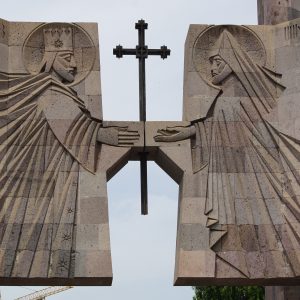
For citizens of the CIS and many European countries, Armenia has a visa-free regime with a stay of up to 180 days. In other cases, you can easily obtain a visa at the airport upon-arrival or an e-visa through the official website of the Ministry of Foreign Affairs. (https://www.mfa.am/en/visa/)
Any kind of payment in Armenia is made in local currency, which is called AMD (Armenian Dram). Approximate ratio of currencies to drams.
1 RUB = 6.5 drams
1 EURO = 570 AMD
1 USD = 490 AMD
The exchange rate can be tracked through “Rate.am” mobile application. You can exchange currency both in banks and in exchange offices. If you need to withdraw cash, you can use a large number of branches of different banks and ATMs. In the capital, in most shops and restaurants, as well as in hotels, you can pay with a bank card. It is better to travel around the regions in cash, and you can cash out of plastic cards only in the banks or ATMs of large cities.
In the city, in addition to public transport, which you can get acquainted with through the “Yerevan Routes” application, you can take a taxi. Visitors to Armenia are always pleasantly surprised by the affordable price of taxi services. The average cost of a 10 km drive is about 1400 AMD (~ 3 $). You can use mobile applications such as “GG”, “UTaxi”, “Yandex”, “TaxoLine”, “Mobi Taxi”, “inDriver”. You can reach different regions of Armenia by taxi. The cost of the drive, in most taxi companies, outside the city is 150 AMD / km.
There is practically no language barrier with Russian speakers. Most of the young people in large cities understand and can communicate in English easily.
There are supermarkets in the capital that work 24 hours.
In cities, towns, highways, there are cafes, restaurants, where you can have a snack, relax. Especially recently, the so-called cafe markets and food courts have become popular on the roads of Armenia, where you can stop for a few minutes to buy fresh pastries, bread, sandwiches, salads, sweets and other products. If you find it convenient, you can sit on the spot, sit in specially designated places, taste food with a bottle of Armenian tan (yogurt) or juice, relax and continue your way. Such food-stops are: “Gntunik” of Aparan, “Tsovagyugh” of Sevan highway, “Vayk food court” of Vayk city road – many other similar markets. In these places there are public toilets, roadside markets, gas stations.
You can visit Armenia at any time of the year. In Spring and Autumn here, we have the most enjoyable temperature. Summer is quite hot, but it is cooler in the mountains and is a very good time for a hike: conquer the peaks. It is also a pleasure to spend the summer in Lake Sevan. Winter days can be spent in Tsakhkadzor, Jermuk, Amasia, Ashotsk, Lernanist. Here you can enjoy the fresh air of the mountains and experience winter sports. All the necessary equipment can be rented on the spot, although I know that the professionals bring their own equipment. And do not forget to take your swimsuit with you, because on clear days, high mountain snow will give you a beautiful winter sun.
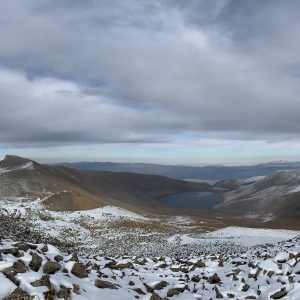
Historical Armenia occupied 300,000 to 360,000 square kilometers. Historical Armenia covered an area of 300,000 to 360,000 sq. Km. and was located in the northeast of the Armenian Highlands from the Black to the Caspian Seas, occupying most of the interfluve of the Kura and Aras. Today, only one tenth of these territories remain, about 29,800 square kilometers, and borders Georgia in the north, Azerbaijan in the east, Iran in the south and Turkey in the west. It has no access to the sea, it is a high mountainous country, as 90% of it is located at an altitude of more than 1000 m above sea level. The lowest point is in the Debed River valley, 380 m above sea level, and the highest is the top of Mount Aragats – 4090 m. Armenia is in a seismically active zone. The four major faults are actively affecting earthquakes here. The main relief is lava plateaus and volcanic mountain ranges. The country is bordered by mountain ranges, mountains with folded blocks, which are cut by deep gorges, river valleys and small lakes. This is one of the most attractive countries for mountaineering and mountain hiking. They have the ability to climb high peaks, some of which are the following: Aragats – 4090 m, Azhdahak – 3597 m, Tskhuk – 3584 m, Spitakasar – 3555 m, Ishkhanasar – 3550 m. The highest mountains are listed here, but of course there are much more. mountain peaks, the conquest of which will be a great pleasure, as the landscapes opening from the mountain tops are breathable and are not transmitted by any word or camera. They are: Khustup – 3201 m, Armanghan – 2829 m, Vardenis – 3522 m, Araler – 2577 m. However, people who do not engage in mountain tourism should not be upset. We can ship to most of the places where this beauty opens by jeep.
The Armenian rivers, about 9500, which are in the territory of Armenia, also has a special charm, as most of them are mountainous, in some places they are quite rough, passing through narrow gorges. Due to the uneven terrain, beautiful waterfalls are formed in some parts of the mountain rivers. The longest rivers are Araks, Debed, Vorotan, Aghstev, Akhuryan, Hrazdan. In Spring they become flood, because of the melting of snow creates new rivers that flow along large waterways, and in the summer many of them dry up.
As for the lakes, they are about 100, but mostly they are small, and some dry up in summer. Most of the lakes originated in craters. The largest are Arpi, Akna, Sev and, of course, the pearl of Armenia – Lake Sevan, which is one of the five highest mountain freshwater lakes in the world. 75 reservoirs have been built on the rivers of the republic, more than 10 of them are under construction.
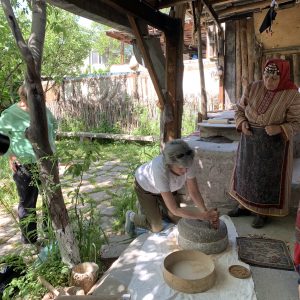
The most important value for Armenians is family and relatives. The young generation shows a great respect towards the elders. The word of the head of the family plays an important role, but the eldest woman (usually grandmother) plays the leading role in the household. The woman is responsible for hearth, and the man is the breadwinner. Children in a family are the greatest value. Previously, in some, especially in the eastern regions of Armenia, the bride did not have the right to talk with the older family members: her father-in-law, mother-in-law and her husband’s brothers. Even a scarf was tied over his head in such a way that it covered his mouth. This custom kept her at a distance and did not allow her to cross the line of decency. Now, of course, they no longer have this kind of tradition and many often regret it bitterly.
One of the most important traditions of Armenians is hospitality. Guests are always welcome. A table of all the best and most delicious is laid in front of the guest. It doesn’t matter if the owner has enough or not. He can ask relatives or neighbors, which is also important – a feeling of mutual assistance. The guest is placed on the best bed with the finest linens. Only benevolent and spiritually rich people, in the pagan period, could have a god of hospitality and generous hosts – Vanatur. And as they say in Armenia – “Guest from God”.
Education of children is very important for Armenians. Parents are ready to get into any debt, as long as their children have a higher education. In the Soviet period, it was considered worth marrying, if the bride had a diploma with dowry.
Another interesting tradition of Armenians is touching each other. When they meet, men hug or pat each other on the shoulder, and women hug and kiss on the cheek, so if you meet the same person for the second time, don’t be scared or shocked by such an expression of joy. On the contrary, it is a way of showing you kindness and a warm attitude towards you.
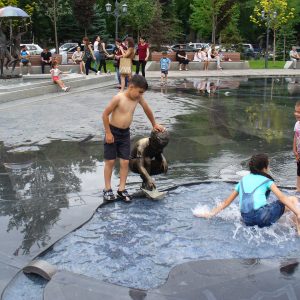
Both state and religious holidays are celebrated in Armenia. A distinctive feature of religious holidays is that they are celebrated according to the calendar of the Armenian Apostolic Church and do not always coincide with the dates of celebrations of other Christian churches. As for the festivals held in Armenia, it is necessary to be present in order to see and enjoy all the beauty, kindness, warmth and taste of those events that are held in different regions of our republic. We have a lot of festivals taking place the whole year round, for example, the jazz festival, tolma, wine, dance, sheep shearing, barbecue and more other fests. Participation in the festival will provide an opportunity to get acquainted and feel the spirit, traditions and life of people living in the region.
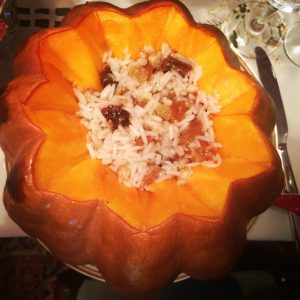
After tasting Armenian dishes, the only word we can say is ‘’WOW’’. I don’t remember a single case when the guests in Armenia did not complain that they were beginning to get better here, because every single product they try is very tasty. Do you know what the secret is – in addition to the skill of the chefs, we have very tasty products. This is facilitated by the sun, the height at which they grow and the water with which plants and trees are watered. Khorovats, dolma, khashlama, Sevan trout and blue crayfish, Armenian cheeses, vegetables and fruits – you have to try all this by yourself, because words cannot describe the taste and smell.
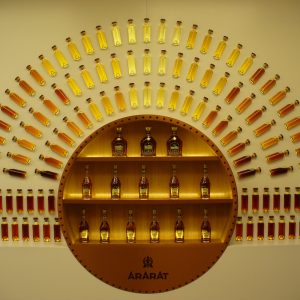
The Armenian Highlands are considered to be the oldest spot for wine production. It is known that Noah, descending from Mount Ararat after the flood into the valley, planted the first vine of grapes. Archaeologists have found on the territory objects dating back to the 5th millennium BC, which testify to the established production of wine on an industrial scale. And now Armenian wines are winning gold and silver medals at various exhibitions around the world.
Cognac has been produced on an industrial scale in Armenia since 1887 and became known to the world due to its taste and thoughtful marketing move of the entrepreneur Shustov. The most famous brands are Ararat and Noy.
The climate in Armenia cannot be described in one word, as the area is located at different altitudes. We can say that the climate in Yerevan and Ararat Valley is dry continental, and in winter the temperature reaches -20, and in summer up to +42 degrees with a minimum of precipitation (350 mm per year).
Armenia has several climatic zones, from the desert to the subtropical, which is great because in one day you can start hiking in the Ararat Valley + 25 and then climb the mountains to reach the settlements where it snows, and driving only 150 – 180 km. And the most important are the sunny days and hours. It is not for nothing that the country is also called “sunny Armenia”. There are practically no long rains here, no cloudy days, even if the sun comes out in a few hours. On average, the Ararat Valley receives about 2,700 hours of light a year. However, be careful with the sun, as you can easily burn in the highlands. In particular, it is not recommended to take a bath on Lake Sanaa without sun protection. And skiers, lovers of bathing on sunny days, skiing, should not forget about skin protection.
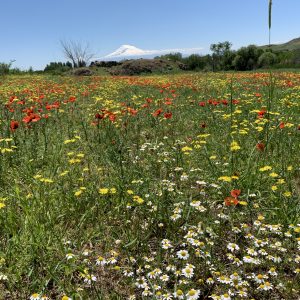
Due to the mountainous and difficult terrain in Armenia, there is a very rich and varied flora on the territory. Armenia is one of the first in the world in terms of the concentration of various plant species per 1 square kilometer. There are a large number of endemic plants. And the most interesting thing is that there are some places where we still have several varieties of wild wheat, which appeared several millennia ago. Due to the fact that the country is mountainous, on the same day in the valley you can see the fruits hanging on the trees, and at an altitude of 1700 m above sea level you can admire the blossoming gardens, not to mention the snowdrops just appearing from under the snow at the foot Aragats mountains. Consequently, plant varieties, which are 3500 species, are found in the territory from desert to alpine varieties.
As for the fauna, there are brown bears, lynx, wild boars, wolves, etc. Well, in fact, 76 species of mammals, 44 species of reptiles, 6 species of amphibians, 30 species of fish and about 350 species of birds are found in Armenia. In rocky places early in the morning you can admire mouflons and bezoar goats, and in the sky, you can see soaring eagles. Unfortunately, the population of many representatives of the fauna has decreased in Armenia, but the government is making efforts to preserve and increase the number of animals. Some of these are: The Central Asian leopard, red deer, lynx, black vulture, pelican, Vordan karmir or Armenian cochineal, etc.
Due to different geographic conditions, climate, elevation changes and isolated lakes, Armenia has a large number of endemic flora and fauna. Those among the flora are: Ararat wheat, Urartu wheat, Armenian lily, Zangezur hawthorn, Tigran’s elder, Nairi almond, Armenian mountain ash and others. Among the fauna, the following are endemic: Armenian viper, Armenian lizard, Armenian mouflon, Armenian gull, Ishkhan, Bakhtak, Armenian herring and other types.
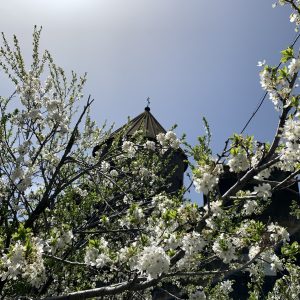
A large number of territories and populations of the Armenian highlands are dated back to the ancient times, as history shows, many historical events which happened here are either unique in the world history, or the first too peace here. So, Noah landed with the ark on Mount Ararat, and the resurrection of mankind began. Armenia became the first state Christian country in the world which adopted Christianity as a state religion in 301. The first Armenian Catholicos was Gregory the Enlightener. The Armenian Apostolic Church differs from the Orthodox and other churches, which considers it monophyte.
The total population of Armenia is 3,100 thousand, 1,100 thousand of which live in the Capital Yerevan.
The population consists of 46.5% male, and respectively 53.5% female.
The average life expectancy for men is ~ 70 years, for women ~ 77 years.
The average birth rate per day is ~ 112 people, and the death rate per day is ~ 75 people, migration per day is ~ – 6 people.
Literacy of the population – 99.8%
The population of Armenia is one of the few, mono-national states – about 97% of the population are Armenians. The republic is also home to about twenty nationalities, representatives of national minorities, such as: Russians, Poles, Ukrainians, Georgians, Greeks, Yezidis, Kurds, Assyrians, Jews, Germans, etc.
Religion in Armenia ~ 98% Christians.
Despite the differences in nationality or religion, Armenians have very warm and good relations with everyone. There are various communities of national minorities in Armenia, which our state assists and helps in solving various issues.
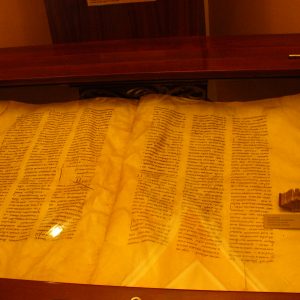
“The language of the gods” – this is how our ancestors called the Armenian language. It is known that this is one of the oldest languages and belongs to the family of the Indo-European language family, but it is a completely separate branch. Linguists are still arguing about who and what borrowed from whom, but it is clear that there are many namesake words in the Armenian language and other, not only European languages. However, as they say, let’s leave the controversy to our scientists, and we’ll talk about the fact that the proto-Armenian language appears already in the 8th millennium BC. and already in III – II it is formed in the ancient Armenian, which was spoken by the people inhabiting the Armenian Highlands.
As for writing, the Armenians have always had it, it just changed in different periods. The existence of the god of writing Tire in Armenia is also a proof for this fact. The modern alphabet was created Mesrop Mashtots in 405. Consisted of 36 letters, and 3 letters were added later. Since then, the people have been using this script, and recently the art of Armenian writing was included in the UNESCO Intangible Cultural Heritage List.
The population of Armenian diaspora quantitatively exceeds that of Armenia. The total number of Armenians in the world is about 11 million, of which only 3 million live in the Republic of Armenia. This is due to the long and complex history of the state. However, the connection between the diaspora and the historical homeland is quite strong. Many foreign Armenians are actively involved in the development of the economy and science of Armenia. They make investments in the construction of various enterprises, in this way providing new job opportunities. Contribute to the prosperity of the republic. It is interesting that representatives of the diaspora can live and work on different continents, in different countries, completely without remembering where their roots come from, but if Armenia finds itself in trouble or is in danger, they immediately rally and rush to help and protect their homeland of their ancestors.
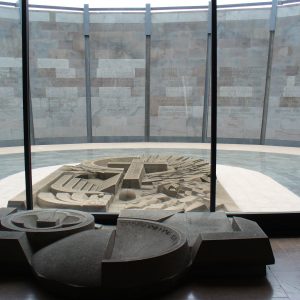
In the 17th century, the territory of Armenia was divided between the Persian and Turkish states. In western Armenia, which fell under the yoke of Ottoman Turkey, at that time more than 3 million people lived, for which the darkest and most difficult times began. Seeking help from various European states did not lead to any results. The Turkish government, starting from the 1890s, began to carry out the systematic destruction of the indigenous population of these territories, and in 1915 it perpetrated the genocide of the Armenians, expelling, cutting and destroying people in every possible way. According to some estimates, more than 1.5 million Armenians were killed. These atrocities continued until 1923.
Until the 1920s, Armenia was an agricultural country, and the industries of copper ore, copper-chemical, wine-vodka and brandy were also developed. However, after the 30s of the last centuries, the chemical industry began to develop actively. Large chemical enterprises were built, which become the largest centers of the USSR. Those were the enterprises for the production of chloroprene rubber and latex, sulfuric, nitric and hydrochloric acids, nitrogen fertilizers, chlorine, calcium carbide and others. Light industry, machine-building, non-ferrous metallurgy, all this fields are being developed, whole stations of hydroelectric power stations are being built. Armenia does not have gas and oil, but in terms of energy supply it was at a very good level, since supplied not only itself, but also exported to other countries. these are: hydroelectric power station, thermal power station and Metsamor nuclear power plant. And of course, in the republic, where there are huge deposits of stone reserves, construction materials such as tuff, marble, granite, basalt, pumice, travertine and others are mined and processed. Cement plants are under construction. Local raw materials were used to produce aluminum, molybdenum and gold. The jewelry business and diamond cutting factories are well developed. Metal-cutting machines, precision instruments, electric motors, compressors, tools, etc. were produced. From the light industry were known: the factory of silk fabrics, knitwear and others. The tobacco, cognac, wine and vodka industries were very developed. During the Soviet period, Armenian cognac and cigarettes with a black filter “Akhtamar” were considered currency, because any doors were opened for such a present.))
Unfortunately, some enterprises and industries were closed after the railroad blockade of the 90s due to the impossibility of exporting products. However, some are now trying to recover, and other more modern industries are beginning to actively develop. Armenia has gone far in the field of information and innovative technologies. Already in 2018, more than 800 companies with more than 15,000 specialists worked here. Today this area is actively developing and the average annual growth is over 26%.